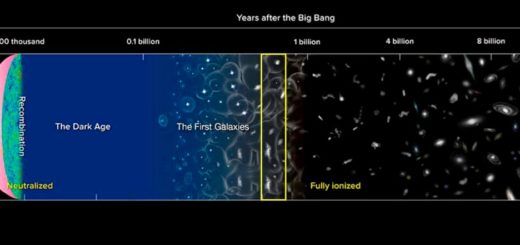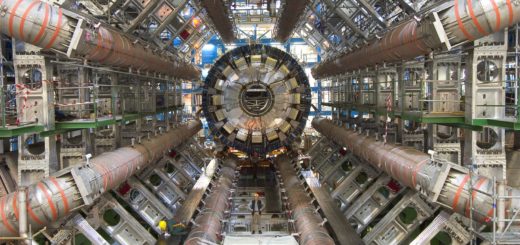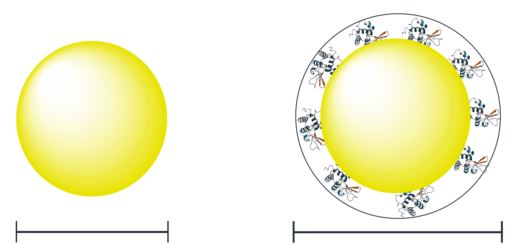Once Upon a Dynamo in the Early Universe
New simulations by University of Hamburg researchers & collaborators at Australian National University reveal a powerful turbulent dynamo acting in the early Universe.
This dynamo could have rapidly amplified the initially weak cosmic magnetic fields to become much stronger intergalactic magnetic fields glimpsed via telescopes in recent years.
Cosmic Magnetic Fields
Magnetic fields exist all around us from the Earth’s magnetic field that deflects a compass and produces the shining aurorae, to the everyday use of magnetic fields in microwave ovens, electric motors and MRI scanners. The Earth’s magnetic field strength is roughly 0.5 Gauss (G) and it probably acted as a crucial protective shield around the Earth to enable the development of life. In comparison, the strength of a small fridge magnet is about 50 G and of an MRI scanner roughly 20,000 G.
On bigger cosmic scales, magnetic fields are ubiquitous, and observed to exist on planets like Jupiter (4 G at the cloud tops) and on stars like our Sun (1 G at the solar surface and up to 3000 G in sunspots). Even our Milky Way spiral galaxy has its own much weaker magnetic field of around micro-Gauss strength (10−6 G), yet it is present throughout our galaxy which is a trillion (1012) times larger than the Sun! The nearby Whirlpool Galaxy gives us an idea of what our own Galaxy’s magnetic field might look like, when seen from the outside.
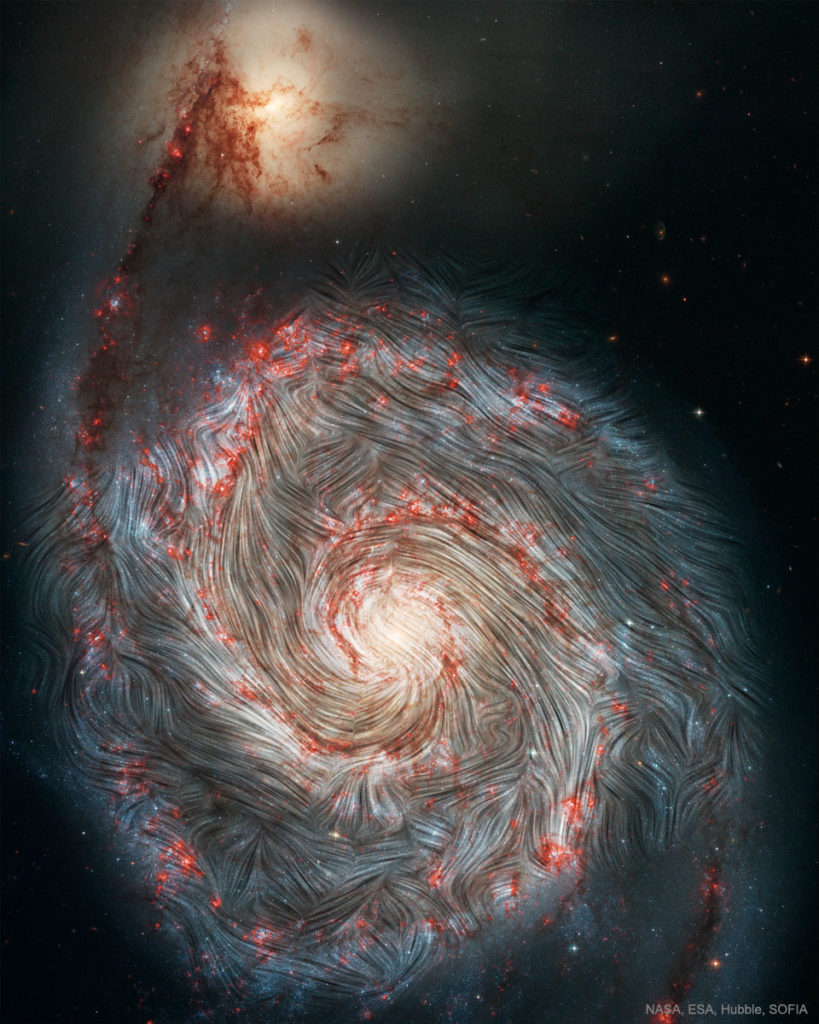
From planets all the way to galaxies, astrophysicists know that the dynamo effect is likely responsible for building up magnetic fields up to the strengths we see today. The dynamo effect operates by means of converting the kinetic energy of a fluid (gas or liquid) into magnetic energy. A rotating fluid with charged particles will set up an electric current which creates a magnetic field. And a changing magnetic field in turn creates an electric field, leading to feedback stabilizing the dynamo. In the case of the Earth, its liquid outer core is heated by the solid inner core leading to convection. The Earth’s rotation then sets up electrical currents which first amplified and now sustain the Earth’s magnetic field.
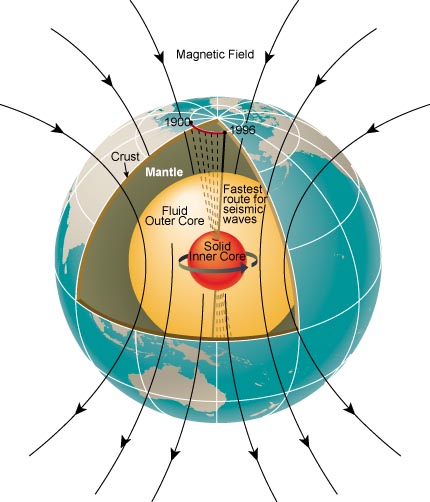
However, dynamos powered by rotation cannot explain cosmic magnetic fields that might exist on scales larger than galaxies. Over the last 10 years, the Fermi gamma-ray telescope and other observations have indicated that the most of our entire Universe is likely filled with weak Intergalactic Magnetic Fields (IGMFs) with magnetic field strengths of at least a femto-Gauss ~10−15 G. This is a major puzzle as theoretically we expect the initial seed primordial magnetic fields to be far smaller, around ~10−30 G! How did a dynamo (or some other mechanism) operate over the entire Universe to produce highly amplified cosmic magnetic fields that Fermi seems to indicate?
The Turbulent Dynamo
The solution to this riddle can be a special kind of dynamo called the turbulent dynamo (also called the small-scale dynamo). Turbulence is the chaotic motion of fluid particles like the disorderly stream of water flowing out of a fully open tap. The early Universe was filled with an opaque, dense, cosmic fluid containing charged electrons and protons both tightly coupled to hot cosmic radiation. But what causes turbulent motions in this cosmic fluid? They arise from pre-exisiting unevenness or fluctuations in the fluid’s own density across regions of space. Under gravity these fluctuations induce compressional (rather than rotational) motions causing flows from under-dense to over-dense regions in the fluid. Density fluctuations were imprinted in the cosmic fluid at an even earlier era and have been confirmed to exist by observations of the cosmic microwave background (CMB) radiation. The turbulent dynamo can therefore operate during a particular era in the early history of our Universe, well before even hydrogen atoms had formed.
At small length scales within this hot turbulent fluid, magnetic fields can get exponentially amplified and become much stronger. This turbulent dynamo process is quite non-linear and needs 3D simulations which were recently performed by us for the special context of the early Universe fluid. One way of visualizing how magnetic fields get amplified is via the stretch-twist-fold in 3D of magnetic field lines embedded in the turbulently moving fluid.
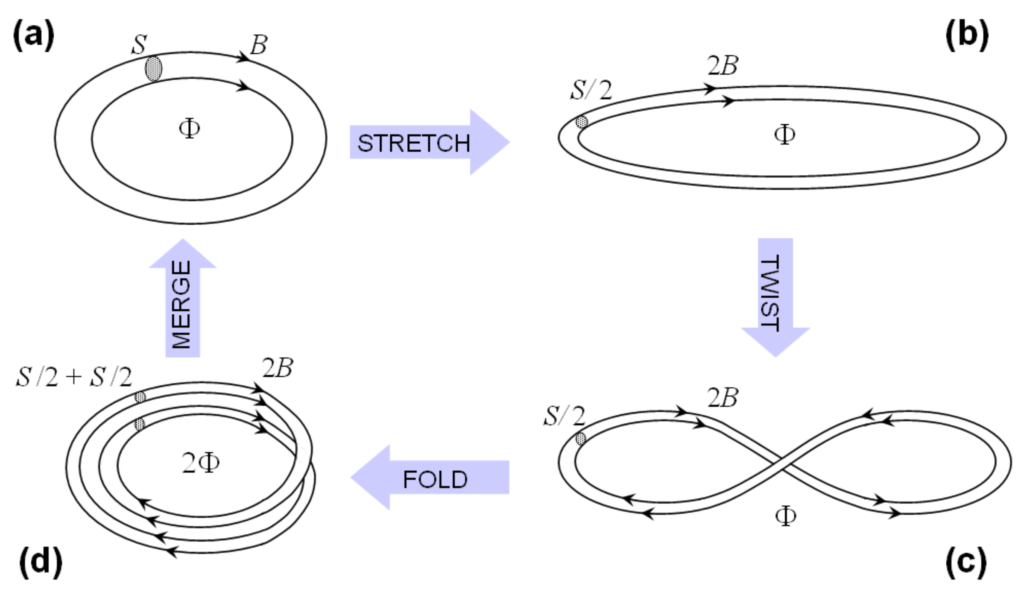
(Figure Credit: www.mpifr-bonn.mpg.de/3622111/lectures6-9.pdf)
Simulations of the Early Universe Turbulent Dynamo
To accurately model and understand the behavior of a turbulent magnetized fluid, we perform MHD (magnetohydrodynamic) computer simulations that numerically solve the underlying non-linear equations. Our simulation results show this turbulent dynamo at work, converting some of the fluid’s kinetic energy into magnetic energy. The enhanced magnetic fields show a tangled or chaotic structure.
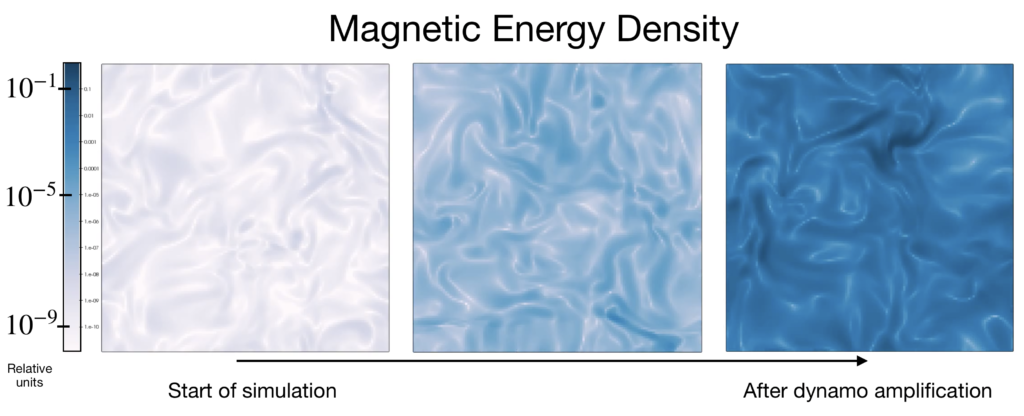
(Figure Credit: own work)
Every fluid has its own characteristic speed of sound waves that can travel in that medium at a given temperature. For fluid motions, the Mach number M of the flow is defined as the ratio of its flow speed to its sound speed. In an expanding Universe, very early epochs imply a smaller, hotter and denser Universe with a very high sound speed. Therefore, we expect very low Mach number (M ~ 10−4) turbulence in the early Universe. Such low Mach number MHD simulations had never been performed earlier, the closest being just below M ~ 10−1.
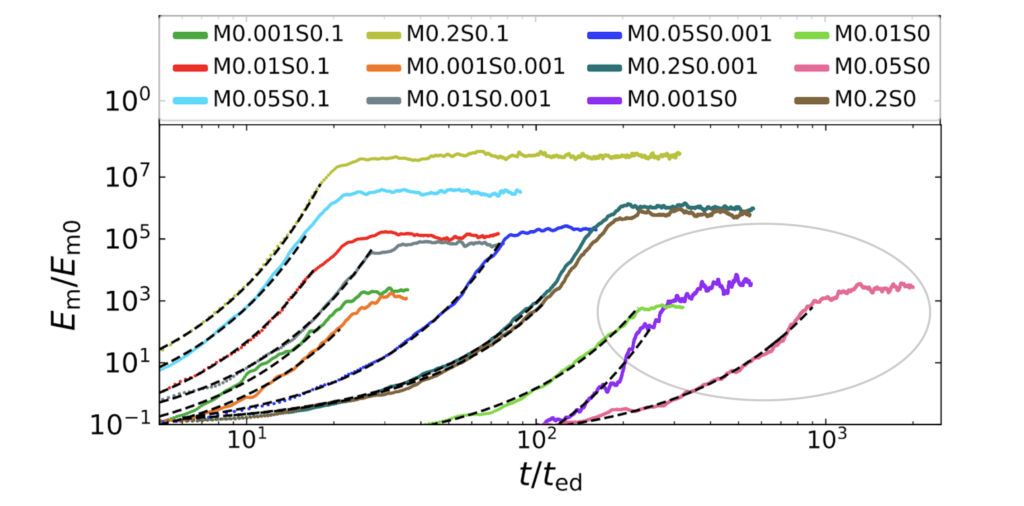
Now, our new simulations have been able to probe a new regime of sub-sonic MHD turbulence, down to M ~ 10−3 (i.e. 0.001) and find an important result : the turbulent dynamo becomes more efficient as we lower the Mach number from 5 x 10-2 to 10-3 ! Only by doing several sets of numerical simulations on high-performance computational clusters have we been able to discover and check this unusual behavior.
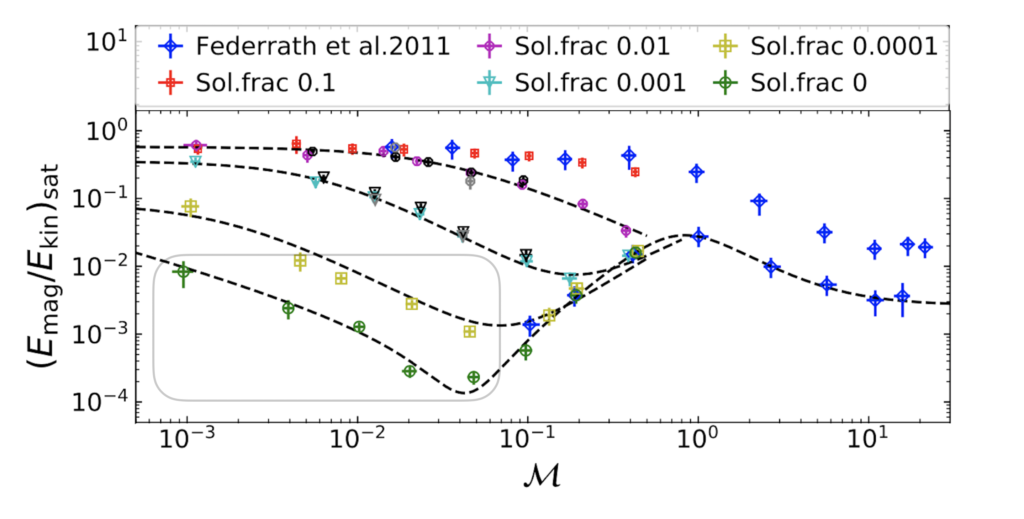
These results imply that the turbulent dynamo could be efficient enough in the early Universe to amplify weak magnetic fields enormously to explain the much stronger inter-galactic magnetic fields inferred from Fermi observations. Our work also reveals that the amplified cosmic magnetic field strengths are most correlated with each other at relatively small separations of 0.1 to 100 parsecs (roughly 700 times the size of our solar system to about 1% of the size of our Galaxy). The only input assumed were fluid velocities sourced by primordial density fluctuations. From CMB observations over the years, we know those did exist in the early Universe!
This research was carried out by Radhika Achikanath Chirakarra, Christoph Federrath, Pranjal Trivedi & Robi Banerjee. The paper has been published in the journal Physical Review Letters in March 2021 and is also available on the arxiv preprint server.

